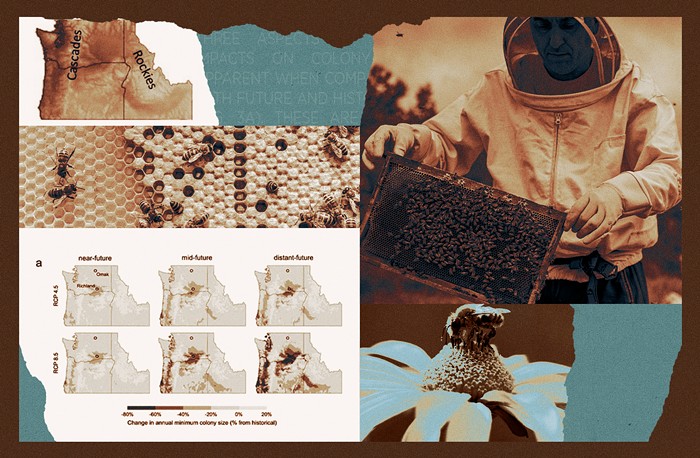
One Small Part of Antarctica Stayed Cool While the Rest Warmed: Perhaps the most frustrating aspect of climate change denialism is the willful idiocy of using local exceptions to a widely supported trend as evidence that trend is false. Climate science—like meteorology, biology, and political science—is a field defined by intrinsic variation of its object of study, and is reliant on statistical tools with the power to infer signal from noise. The inherent uncertainty of this pursuit can lead some researchers (like UW’s Cliff Mass) to avoid attributing any single weather event to climate change, even if the event itself is consistent with predictions of weather under future climate regimes, for fear of discrediting climate research more broadly. (It will not surprise regular Puget Sound news readers to learn this is not a universally supported position. Which is why a recent Nature study highlighting one such local exception—the absence of 21st century warming on the Antarctic Peninsula in the face of overall increasing temperatures elsewhere across the continent—is both good, necessary science, but at the same time it's sure to be seized upon from predictable quarters, the deniers of a widely supported trend, global warming.
UW Professor Adam Summers Digitizes All Of The Fishes: You may have heard of the field of bioinformatics, a discipline primarily concerned with using the tools of computer science to understand genome-wide DNA sequence data. The field of biodiversity informatics, on the other hand, is less familiar, and primarily concerned with using computational tools to make sense large datasets from the higher levels of biological organization. Examples of what scientists term the emerging biodiversity informatics “infrastructure” include online timesucks such as the Global Biodiversity Information Facility the Map Of Life, and VertNet. UW Biology Professor Adam Summers’ ambitious quest to upload images from CT scans of the morphology of all of Earth’s 33,000+ fish species falls solidly under this umbrella. You can read more about his project here, and explore the scans themselves over at the Open Science Framework.
Rare Fin Whale Sighting in Puget Sound: It’s a strange irony that the Pacific Northwest’s current population boom is occurring in lockstep with the return of large wild animals to their native ranges throughout the region, often for the first time since extirpation in the mid-20th century or before. (More on this in a future column.) Following the rebound of Grey Wolves, Wolverines, and Pacific Fishers, biologists at Olympia’s Cascadia Research Collective have now confirmed the presence of Fin Whales— the world’s second largest marine mammal—in Puget Sound, not far from Dungeness Spit. Here’s a video of a breaching Fin Whale, because we all need more awe in our lives:
The Human Brain, Mapped: Per another recent Nature paper, neuroscientists have now charted the functional regions of the cerebral cortex, the brain’s outermost layer. Divying up both hemispheres into 180 discrete functional regions defined by cells with similar structure, function and connectivity, the team described 97 new areas of our grey matter, using multiple magnetic resonance imagining (MRI) measurements. According to Rex Yung, a neuropsychologist at the University of New Mexico in Albuquerque, the project provides a template “to further explore the unique intersection of individual talents with intellectual and creative abilities—the things that make us uniquely human.”














